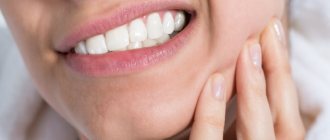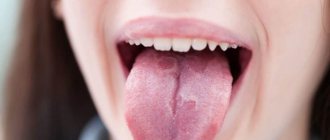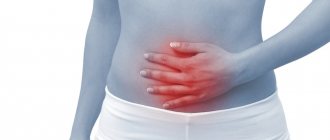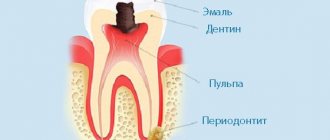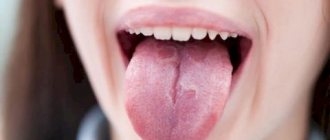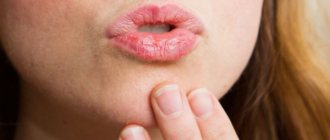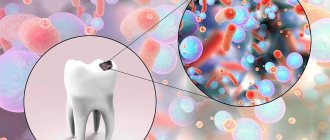A tongue burn is an injury that damages the mucous membrane, and in some cases even muscle tissue. This problem brings a lot of discomfort - from pain and the inability to eat or drink liquids to death. It is very important to urgently contact a specialist who, after studying the cause of the burn, will prescribe treatment. If you neglect the help of a qualified dentist, serious complications can occur, including necrotic decomposition of soft tissues and infection of the entire body.
Types of tongue burns
Depending on the cause of origin, the following types of injury are distinguished:
- Chemical burn of the tongue or oral cavity - when tissues are damaged as a result of exposure to aggressive chemical compounds;
- Thermal - when the surface was exposed to a high temperature object.
- Electrical - occurs as a result of tissue contact with electricity. For example, when performing dental procedures. Electric current affects not only the tissues of the tongue, but the entire body as a whole.
The tongue itches - what to do if the organ literally itches
The tongue can itch not only in a figurative sense. If you experience unpleasant irritating sensations, the first thing you should do is figure out what could be the reason for the appearance of this symptom. The organ is a muscle containing a huge number of nerves and blood vessels. The occurrence of discomfort, burning, soreness, swelling and itching in the tongue always indicates some pathological condition, and the symptom itself may be associated with dental disease and disturbances in the functioning of internal organs.
Why might my tongue itch?
In any case, if this symptom develops, you should immediately see a specialist. Further in this article we will find out why the tongue may itch, what preconditions contribute to this, and what to do in such a situation.
Symptoms of a tongue burn
Symptoms depend on the extent of soft tissue damage:
First degree - a burn occurs due to short-term exposure to high temperature tissue. The patient experiences slight redness and swelling of the mucous membrane. Often, a burn condition is provoked by consuming too hot food or liquid.
Second degree – swelling of the mucous membrane, redness, and multiple blisters on the surface are observed.
Third degree - accompanied by tissue death, large blisters, redness of the surface, the organ itself seems to “change its consistency.” As a rule, it occurs due to exposure to gases, liquids at elevated temperatures, or chemical compounds.
The fourth degree is a severe lesion when the tissues are charred. This burn condition is rarely compatible with life.
Bitter (vata pitta - kapha -)
Bitter taste includes air and ether, its properties are light, cold and dry. It is found in leafy green plants (spinach, kale, and collard greens), as well as other vegetables (including zucchini and eggplant), herbs and spices (turmeric, fenugreek, and dandelion roots), coffee, and certain fruits (olives and bitter melon). . Often, bitter tastes are not attractive on their own, but they stimulate the appetite and help bring out other flavors.
Bitter taste is a powerful neutralizer with antibiotic, antiparasitic and antiseptic properties. It helps reduce weight, reduce water retention in the body, promotes the disappearance of skin rashes, fever, and also relieves burning sensations and nausea. Its qualities (cool and dry) balance the Pitta type (which has characteristics like hot and oily).
It also balances the properties of Kapha (thickness and moisture), providing lightness and dryness. Vata types are easily disturbed by bitter tastes since they are both based on the elements of air and ether. A Vata type who overuses bitter foods may experience depletion of seven vital tissues (dhatu), and hence typical disorders such as constipation and insomnia.
How to properly treat a tongue burn?
Treatment methods depend on the type of thermal injury.
What to do in case of a thermal burn of the tongue?
- rinse your mouth with cool water;
- apply ice or a cold object to the damaged area;
- treat the burn site with a disinfectant solution;
- rinse with a disinfectant to prevent bacteria from entering the oral cavity;
- use local anesthetic compounds;
- while the tongue is recovering, eat liquids, fruits and vegetables rich in vitamins C and B. Avoid spicy, pickled foods, foods that can have a mechanical effect on tissue (nuts, crackers, seeds, etc.).
- rinse the mouth thoroughly;
- neutralize aggressive chemicals. Depending on the source of the burn, a specific neutralizer is used;
- After neutralization, the burning sensation should go away. For pain relief, it is worth using anesthetics and antihistamines;
- if the mucous membrane is severely burned, with damage to the structure of the tongue and muscle tissue, it is necessary to urgently go for an examination to a doctor.
If there are bubbles on the surface of the tongue, you should urgently seek help from a dentist! Under no circumstances should you open blisters yourself! You may need hospital treatment under the supervision of a doctor.
How to treat a chemical burn of the tongue?
Note! If the oral cavity is burned with an alkaline solution, it cannot be rinsed with water, since moisture promotes more active penetration into the soft tissues of the tongue.
Features of pain
Pain that appears on any part of the tongue is called glossalgia. This pathological deviation is characterized by the appearance of signs of inflammation, when the mucous membrane acquires a reddish tint. Glossalgia is never an independent disease; it always acts as a secondary factor provoked by a certain pathology.
Most often, the appearance of discomfort on the tip of the tongue is not associated with the consumption of specific foods - spicy or salty foods. But inflammation of the mucous membrane may intensify if salty, sour or spicy foods come into contact with the injured area.
It is very difficult to determine the provoking factor of pathology without diagnostic studies.
How exactly to neutralize a chemical burn in the mouth?
Carbolic acid is well neutralized by glycerol.
Baking soda and water neutralize acidic compounds.
If alkali gets into your mouth, rinse the cavity with citric acid diluted in water.
If exposed to aggressive household chemicals, the mouth should be rinsed with cool running water.
It is important! Tongue burns take a long time to heal. Unfortunately, these tissues cannot be made motionless for a certain time; the tongue is constantly in motion. On average, it can take several weeks for the tongue to recover from injury.
Sour (vata - pitta kapha)
Sour taste includes elements of earth and fire; its properties are hot, light and moist. It is present in citrus fruits (such as lemon and lime), fermented foods (yogurt, cheese and sour cream) and fermented foods (wine, vinegar, sauerkraut, soy sauce). In moderation, sour taste stimulates digestion, circulation and excretion, provides energy, strengthens the heart, reduces thirst, maintains acidity, sharpens the senses, and helps extract minerals such as iron from food. It also nourishes all vital tissues (dhatus), with the exception of reproductive ones (only yogurt can nourish all tissues without exception).
Vata types benefit from sour taste characteristics such as warmth and moisture. Vata imbalance often leads to digestive problems, and this taste helps stimulate digestion. However, for Pitta types, it causes irritation: increased acidity, heartburn, ulcers, rashes and a burning sensation in the throat, chest, heart and bladder.
Properties such as “heavy” and “wet” cause irritation in Kapha types, but less often than in Pitta types. When consumed in small quantities, this taste helps Kaphas improve digestion and gain additional energy. But its excess leads to lethargy, obesity and digestive disorders.
Treatment of a burn to the oral cavity in a child
According to statistics, a large percentage of patients who turn to a doctor for help as a result of a burn to the mouth or tongue are children. Young patients up to a year and older can unknowingly “taste” household chemicals or alcoholic drinks accidentally left on the table by their parents. Also common causes of burns are eating too hot food.
The mucous membrane of a child’s tongue is more delicate and thin, and therefore requires more delicate handling in case of a burn. For treatment, you must urgently contact a pediatric dentist.
Diagnostic measures
The only correct decision regarding the appearance of the symptoms described above is to contact a knowledgeable specialist. Only a doctor can conduct a competent examination and identify the true cause of the discomfort. Thus, the main diagnostic procedures include:
- general blood analysis,
- taking a swab from the throat.
Tests can determine the true cause of the problem.
Having the test results in hand, the doctor can significantly narrow the range of suspected diseases and even immediately make an accurate diagnosis. It is likely that at the stage of identifying the source of the problem, consultation with highly specialized specialists - a dentist, neurologist, gastroenterologist - may be required. Without knowing the exact doctor’s conclusion, you should not make any attempts to solve the problem yourself, otherwise you can only worsen the situation.
Tart (vata pitta - kapha -)
The tart taste includes elements of air and earth; its properties are dry, cool and heavy. This is the rarest taste, it is present in legumes (beans, lentils), fruits (cranberries, plums, pears and dried fruits), vegetables (broccoli, cauliflower, artichoke, asparagus and turnips), cereals (rye, buckwheat, quinoa*), spices and herbs (turmeric and marjoram), coffee and tea (black and green). Tart taste is not as cold as bitter taste, but has a much greater cooling effect on the body compared to sweet taste.
Astringency is less of an actual taste and more of an effect on the tongue. The mouth feels astringent, like cranberries or plums, or dry, mealy, like most legumes. Vegetables like broccoli or cauliflower have a less tart flavor. Dry foods such as crackers and cereals, most raw vegetables and fruit skins also have a tart taste.
This taste balances Pitta and Kapha. Its drying properties help stop bleeding, absorb water, tighten tissue, reduce fat deposits, heal wounds on the skin, heal ulcers and wounds on the mucous membrane. For example, due to their hygroscopic and absorbent properties, legumes are able to absorb double the volume of water.
In addition, the tart taste has antibiotic and antibacterial properties. It unbalances Vata; Excessive consumption of astringent foods reduces the speed of digestion, causing constipation, heart problems, weight loss, excessive thirst and blockage of the body's channels (called srotas).
* Quinoa is an annual grain crop of the Chenopodiaceae family, growing in South America. Note ed.
Taste test
Take this simple test to determine your relationship with the six tastes in the present moment. Write down the first thing that comes to your mind.
- Name three foods that taste sweet.
- Name three foods that taste sour.
- Name three foods that taste salty.
- Name three foods that taste bitter.
- Name three foods that have a spicy taste.
- Name three foods that have a tart taste.
You may have noticed that in some categories it is easier to remember products, while in others it is much more difficult. Did you answer the first three questions easily? Not surprising. Our diet is high in sweet, sour and salty tastes. They differ from the last three in that the food they contain tends to accumulate in the body. Bitter, pungent and astringent foods help convert physiological reserves into energy.
Artificial flavors and colors are often used to enhance the taste and appearance of food. The flavors you chose may be artificial. And there is nothing surprising here either. Most supermarket products contain a ton of these additives.
And now the good news: each taste bud takes 14 days to recover. This allows you to manage your diet while developing your palate to perceive all six tastes. Changing your habits and planning your diet wisely is the key to health and balance.

